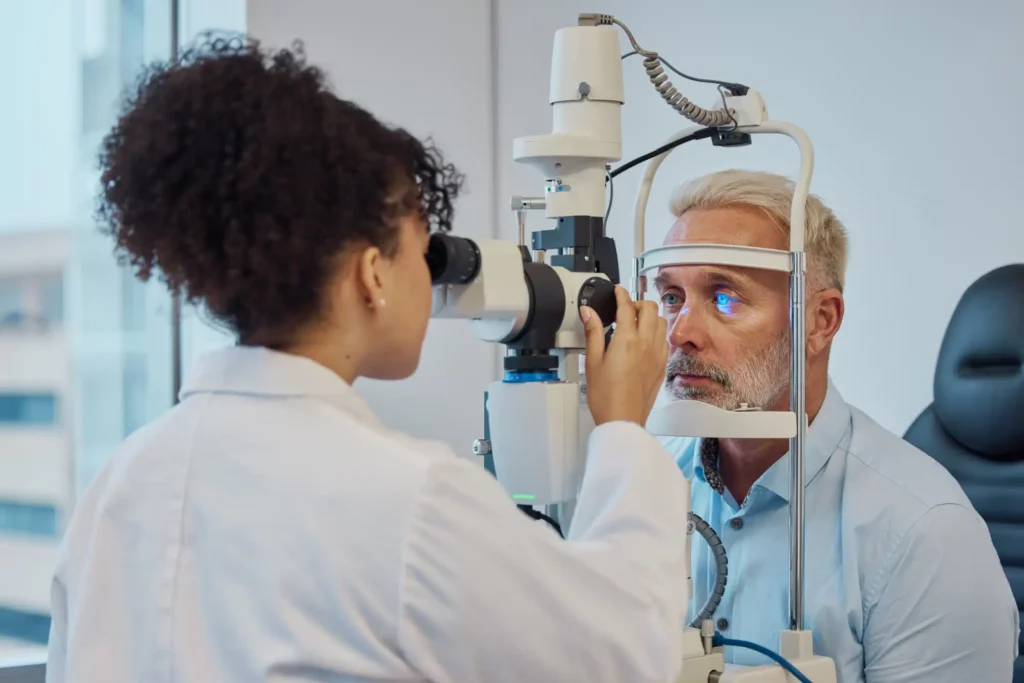If you or a loved one has just undergone cataract removal, first—take a deep breath. You’ve already taken a huge step toward clearer, brighter vision. The days of blurry edges, dull colors, and frustration with everyday tasks may soon be behind you.
But while the surgery itself is quick and safe, the journey to full recovery happens gradually over the next 30 days. As an eye doctor, I’ve walked alongside many patients during this healing time. Let me walk you through what you can expect—week by week—with warmth, honesty, and a bit of storytelling to help make things feel a little less overwhelming.
Week 1: The First Few Days
Mild Discomfort Is Normal
Right after cataract removal, most patients feel a mix of relief and curiosity. One patient told me, “I couldn’t believe how much brighter everything looked—even through the shield over my eye!”
See more: Glaucoma Surgery: Effective Treatments for Vision Preservation
Still, the first few days aren’t always crystal clear. It’s common to feel slight itching, light sensitivity, or a gritty sensation in the operated eye. Think of it like a tiny pebble in your shoe—not painful, but noticeable.
The Importance of Eye Drops and Follow-Ups
You’ll be sent home with eye drops. These aren’t optional—they’re your eye’s best friends. They help prevent infection, reduce inflammation, and promote healing. Some drops may need to be used several times a day for a few weeks. Set reminders on your phone, or ask a loved one to help.
Also, don’t skip your follow-up visit—usually scheduled for the day after surgery. That quick check-in helps ensure your eye is healing as expected.
Let Your Body Rest
This is not the week to deep-clean the house or resume gardening. Avoid bending over too much, lifting heavy objects, or rubbing your eyes. Take it easy, nap when needed, and listen to your body.
One of my patients said, “It felt like I was giving my eye a little vacation—just relaxing with a cup of tea and my favorite old movies.”
Week 2: Adjusting to Clearer Vision
Daily Life Feels Easier
By now, most people begin to notice meaningful improvements. Reading menus, recognizing faces, or even watching TV feels easier. The fog starts lifting. If only one eye has been treated so far, you may notice a sharp contrast—colors through the treated eye often appear cooler, brighter, and more natural.

It’s like someone turned on the HD setting in your life.
Time for Light Activities
You may now ease back into light walks, reading, and gentle movement. Just continue to be cautious about eye strain and exposure to dust or bright sunlight. Sunglasses outdoors are still a good idea.
Emotions Run High—In a Good Way
It’s not uncommon for patients to tear up emotionally when they realize how much vision they’d lost before surgery. Some feel joy. Others feel surprised, or even nostalgic.
“I hadn’t seen my granddaughter’s freckles clearly in years,” one grandmother told me with a soft smile. “That moment is etched in my heart.”
Week 3: Gaining Confidence
Sharper Vision, Fewer Side Effects
By week three, visual clarity improves significantly. Halos around lights often start to fade. Nighttime vision feels more dependable. Reading labels, using a smartphone, or following recipes becomes easier—and much less frustrating.
Some people may experience brief moments of light sensitivity or mild floaters. These usually settle on their own.
Back to the Driver’s Seat?
For many, this is the week they return to driving—especially during the day. Of course, every case is different, so always wait until your eye doctor gives the green light.
Social outings, family gatherings, and daily errands become less stressful when you’re not squinting to see who’s waving at you.
Week 4: Seeing the World Differently
Vision Stabilizes
By now, your eye has done a lot of healing. Most patients describe their vision as stable, clear, and natural. If you had cataracts in both eyes, you may now be preparing for your second surgery (which typically follows a few weeks after the first).
At this stage, your doctor may perform a refraction test to see if you need updated glasses—or if you can ditch them altogether for many activities.
Colors and Contrast Feel Alive Again
One of the most remarkable things patients mention is how much better they can see color and contrast after cataract removal.
“The white on my walls wasn’t white—it was cream! Now it’s truly white again,” said one gentleman, laughing. “I painted my kitchen thinking it was gray. Turns out, it was beige all along.”
FAQs
Can I rub my eyes?
Not yet. Even if they itch, resist the urge. Rubbing can disrupt healing or even cause complications. Use prescribed drops for comfort and ask your doctor if the sensation continues.
Will my vision keep improving?
Yes, most people notice continued fine-tuning over a few weeks. If you had advanced cataracts, the contrast may feel dramatic—and it gets better as your brain adjusts.
What if one eye feels different than the other?
Totally normal. If you’ve only had surgery in one eye so far, you’ll notice a mismatch. Once the second eye is treated, your vision will feel more balanced.
Conclusion: The Light at the End of the Tunnel
The first 30 days after cataract removal are more than a healing period—they’re a rediscovery of your world.
You’ll begin to notice details you hadn’t seen in years: the shimmer of rain on windows, the bright blue of the sky, the look on your loved one’s face when they realize you’re truly seeing them again.
And that glow? It’s not just from your eyes. It’s from the renewed freedom, confidence, and joy you feel every day.
So if you’re still in the early stages, take comfort in the path ahead. Follow your care team’s advice. Be gentle with yourself. And remember—clearer days are not just possible, they’re closer than you think.

